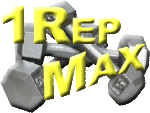How to Fix Muscular Shortcomings
If you've been working out regularly, your muscles are conditioned, and your body fat is under control so you can see muscle definition. The next thing you should do is take a look at what you've sculpted and see where you can use some fine-tuning.
You might notice the problem areas are typically the overlooked ones - the calves, the forearms, the upper and lower pecs and the obliques. Here are some workout tips that will help correct them.
Peg Leg is a condition where your thighs look good, but your calves are underdeveloped. There are two common causes. The first is genetic. You may have been born with calves that attach high, meaning the muscle rests near the back of your knees.
If the problem is genetic, you should focus on increasing the diameter of your calves.
The second cause is simply not working the calves properly. Many people inadvertently limit their calves range of motion while exercising. Here's how.
Your ankle joints are only capable of bending about 90 degrees. Your feet can only move toward or away from your shins a few inches, so you're already dealing with a muscle that has a limited range of motion. If you train your calves by bouncing through the middle portion of a calf raise, you're limiting the range of motion even more. The bottom and top of the rep where you're contracting and flexing the calf muscles are the most important part.
If you want to see the most growth, do this. Hold your position at the top of the exercise (when your ankles are fully extended) and the bottom (when your heels are just below your toes) for 1-2 seconds. That's when the muscles are stimulated and new growth starts.
Skinny Forearms are another common problem. I can't tell you how many people I've watched doing workouts for their biceps and triceps, and they never do anything for their forearms. Then they wonder why their bodies don't look balanced.
The solution is quite simple. Work the forearms the same day you're doing bicep exercises. Wrist curls and reverse wrist curls can help you show improvement in just a couple of weeks. Since forearm exercises done properly can seriously cut down on your grip strength, I suggest you do them at the end of your workout.
Droopy Pecs are a problem I usually see on people who rely almost entirely on the flat bench press to build their chest. The lower chest becomes overdeveloped and the upper chest is ignored. If there is only a slight imbalance between the two, it usually isn't a problem. Unfortunately, as the difference becomes more pronounced, it begins to draw attention away from the shoulders, and not in a good way. The problem gets worse over time as those large lower pecs droop and hang.
You can solve this problem with one simple but dramatic solution. Don't do any flat bench chest exercises for a year until your upper chest development matches your lower. Instead, concentrate on upper chest exercises like incline presses, incline flies and cable crossovers. Don't worry; your lower chest will still get plenty of stimulation from all the incline exercises.
If your body looks more like a Pear rather than a V, there are a couple of things that might be going on. If your waist is soft, it's probably fat. Diet and cardio exercise can help you trim it down.
If your waist is hard, it's more likely you've got a naturally wide waist and hip structure. While there's no way to reduce the width of your waist and hip bones, you can avoid adding to the girth by skipping exercises that work hip flexors. That means no deadlifts, free-weight squats or leg abduction rotations. You should also avoid oblique exercises that expand your midsection width, such as weighted side bends.
To draw attention away from your waist, concentrate on widening your side deltoids and upper lats. Pulldowns, pullovers and upright rows are three excellent choices.
Take a look at your body and if you have any of these problems, make a plan to start fixing them today.
Call for a FREE Consultation (305) 296-3434
CAUTION: Check with your doctor before
beginning any diet or exercise program.
9/16/2007


